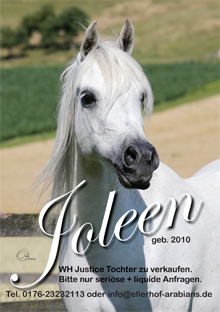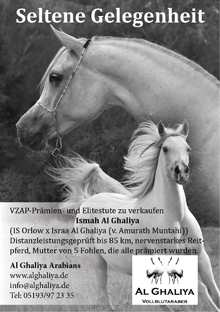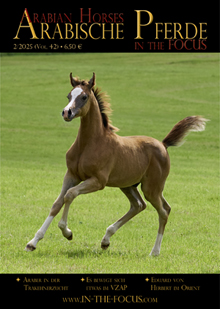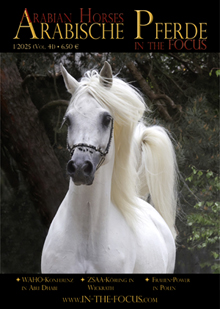In our previous articles of this series we looked at the origin of our modern breeds and discovered the „Crown Haplogroup“ from which the Arabian, Barb / Iberian and Turkoman breeds evolved. In part two, we looked at certain characteristics, such as the “speed gene”, and in the third part at the various Y-chromosomal haplotypes of the Arabian breed and their interpretation. In this fourth part, we look into the Arabian sire lines in more detail.
What Are Sire Lines?
Over the last 200 to 300 years, since horse breeding became more systematically and matings were registered in a studbook or register, a great number of stallions were used for breeding, but only a fraction of these stallions were able to establish a sire line that still exists today. Those who succeeded in doing so were usually genetically strong sires that passed on their traits with certainty, they therefore were used frequently and their offspring could then be selected accordingly. Therefore, a sire line can only emerge over several generations, and cannot be “established” as such from the outset. However, they can be used as a tool to consolidate types, to manage inbreeding or linebreeding and to keep an eye on genetic diversity.
It is the same in Arabian horse breeding, where hundreds, if not thousands, of Arabian stallions have been imported into Europe from the Arab countries. Most of them were used for breeding, but again only a fraction of them were able to establish a sire line up until today. This line is usually named (in retrospect) after the “desertbred” horse, which once was imported. This can be as long ago as +/- 200 years (e.g. Bairaktar db, imp. 1817), or as recent as +/- 40 years (Amer db, born 1986). While their ancestors and lineage before importation were only transmitted orally, the lineage of their descendants was usually carefully registered in studbooks. The male offspring of such a desertbred stallion carried the sire line into the future and therefore, all members of a sire line trace back in their paternal line to a single foundation horse, imported from a country of origin. You find such foundation stallions at the very “beginning” of the pedigree in the top line. Nowadays, that can be 20 and more generations back.
For some of these foundation horses the documentation of their “personal data” is better than for others, which also depended on the importance given to such data by the importer or later owner. So, for some horses, all relevant data is available, i.e. year of birth, strain and substrain (i.e., “marbat” and “rasan”, for example Saklawi Djedran), and breeder (e.g. the name of the Bedouin tribe), to classify them as “desertbred Arabians”. For others, however, this information may have been regarded as irrelevant or may have gone lost over a period of time of up to 200 years and hence, the information is (no longer) available. However, this does not automatically mean that the horse in question did not have a strain and substrain in the first place, or was not bred by one of the Bedouin tribes – it just means that this information has not stood the test of time. If there is reasonable evidence based, for example, on the story of importation, the area where the horse was purchased, ect., the horse is nevertheless regarded as “desertbred Arabian” – freely according to the motto: “In doubt for the accused”.
Genetic Evidence
-------------------------------------------------------------------------------------------------The rest of this article is only visible to Online Subscribers.
Please log-in, if you are already an Online-Subscriber: Login-PagePlease go to the Shop, if you want to become an Online-Subscriber: Shop-page
The one-year Online Subscription is available at 20 €
-------------------------------------------------------------------------------------------------














